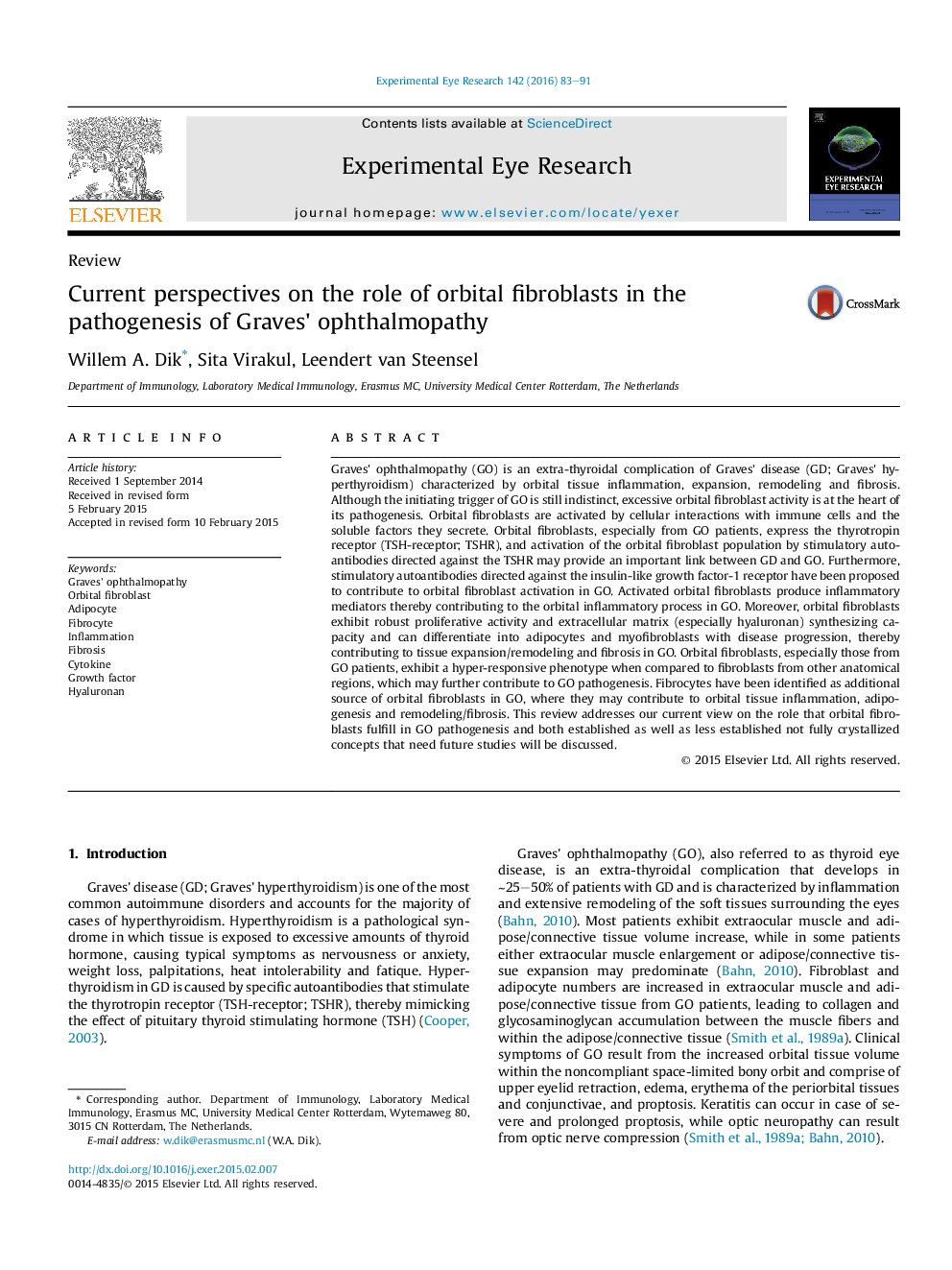| کد مقاله | کد نشریه | سال انتشار | مقاله انگلیسی | نسخه تمام متن |
|---|---|---|---|---|
| 4011117 | 1602580 | 2016 | 9 صفحه PDF | دانلود رایگان |
• Orbital fibroblasts are key cells in the pathogenesis of Graves' ophthalmopathy.
• Orbital fibroblasts are targets for autoantibodies in Graves' ophthalmopathy.
• Orbital fibroblasts display a hyper-responsive phenotype.
• Orbital fibroblasts consist of different subpopulations.
• Fibrocytes contribute to Graves' ophthalmopathy.
Graves' ophthalmopathy (GO) is an extra-thyroidal complication of Graves' disease (GD; Graves' hyperthyroidism) characterized by orbital tissue inflammation, expansion, remodeling and fibrosis. Although the initiating trigger of GO is still indistinct, excessive orbital fibroblast activity is at the heart of its pathogenesis. Orbital fibroblasts are activated by cellular interactions with immune cells and the soluble factors they secrete. Orbital fibroblasts, especially from GO patients, express the thyrotropin receptor (TSH-receptor; TSHR), and activation of the orbital fibroblast population by stimulatory autoantibodies directed against the TSHR may provide an important link between GD and GO. Furthermore, stimulatory autoantibodies directed against the insulin-like growth factor-1 receptor have been proposed to contribute to orbital fibroblast activation in GO. Activated orbital fibroblasts produce inflammatory mediators thereby contributing to the orbital inflammatory process in GO. Moreover, orbital fibroblasts exhibit robust proliferative activity and extracellular matrix (especially hyaluronan) synthesizing capacity and can differentiate into adipocytes and myofibroblasts with disease progression, thereby contributing to tissue expansion/remodeling and fibrosis in GO. Orbital fibroblasts, especially those from GO patients, exhibit a hyper-responsive phenotype when compared to fibroblasts from other anatomical regions, which may further contribute to GO pathogenesis. Fibrocytes have been identified as additional source of orbital fibroblasts in GO, where they may contribute to orbital tissue inflammation, adipogenesis and remodeling/fibrosis. This review addresses our current view on the role that orbital fibroblasts fulfill in GO pathogenesis and both established as well as less established not fully crystallized concepts that need future studies will be discussed.
Journal: Experimental Eye Research - Volume 142, January 2016, Pages 83–91
